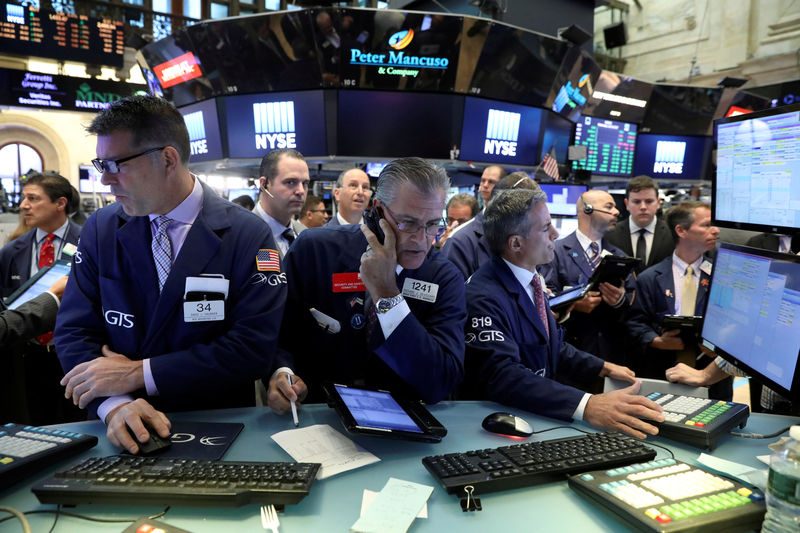By Sinead Carew
NEW YORK (Reuters) - U.S. small-cap stocks, highly sensitive to the fate of President Donald Trump's policy ambitions, may face more selling pressure, leaving small-cap investors scrambling for quality names and more resilient sectors.
Small-caps, which are more reliant on U.S. policy and economic conditions than are large multinationals, have fallen recently on rising doubts that Trump can deliver on pro-business promises such as tax cuts.
After outperforming in late 2016 after Trump's election, the S&P 600 index of smaller companies (SPCY) has fallen 1.4 percent in 2017 while the Russell 2000 (RUT), which includes smaller firms, is up 1.4 percent versus the S&P 500's 9.2 percent rise.
With Russell 2000 and S&P 600 multiples above historical averages, small-cap investors are carefully picking their steps.
"There's a lot of value in small-cap land if you can look through the rubble," said St. Denis Villere III, portfolio manager at Villere & Co in New Orleans, LA.
Some strategists are bearish on the small-cap sector as a whole, citing a patchier earnings outlook than for multinationals as well as doubts about Trump's agenda.
And small-cap indexes, which are typically more volatile than the S&P 500, may face high volatility in coming months as U.S. lawmakers debate controversial issues such as the debt ceiling.
Smaller companies are "much more at risk than the large and more internationally exposed companies," according to Michael Purves, Chief Global Strategist at Weeden & Co, who cited concerns about the lack of a "cohesive mood" in Washington.
The S&P 600 price/earnings ratio is currently 19.7 compared with its long-term average of 17.3, while the Russell 2000 forward P/E is 25.4 compared with its 21.3 historical average.
As a result, Jefferies equity strategist Steven DeSanctis says, the Russell 2000 could fall 10 percent or more, bringing it below where it was before Trump's Nov. 8 election as valuations are high and "volatility is on the rise."
EXERCISE CAUTION
The bearishness is sending investors to seek value in specific small-cap sectors and stocks that still look cheap but have strong growth prospects.
For example smaller financial and information technology stocks are strong value contenders while utilities and consumer staples stocks are out of favor among many investors.
"Given that the economy is better, we're more cyclical biased. That leads us to companies from technology to industrials," said Michael Corbett, chief investment officer at Perritt Capital Management in Chicago, who focuses on small-caps. "Valuations within staples look expensive today, whether it's food or utilities."
Jefferies' DeSanctis is bullish on the technology sector because of its exposure to strong overseas growth and he also likes financials and travel and leisure bets but is wary of retailers, real estate, utilities and materials.
"Financials are a longer-term trend. This is not a thing that's six or 12 months. It's longer-lasting outperformance," he said, citing higher rates and slow deregulation for banks.
Villere is wary of utilities and energy companies but likes technology and some consumer companies.
There is a divergence of performance between some individual small-cap sectors and their larger counterparts, potentially opening a value opportunity for investors.
For example, the S&P 600 financials sector (SPSMCF) is down 6.7 percent year-to-date compared with a 6.2-percent increase for its S&P 500 counterpart. But the S&P 600 financial sector's forward P/E ratio of 15.9 is below its long-term average of 17.4 while the S&P 500 financial sector's multiple of 13.8 compares with a long-term average of 12.8.
In comparison, the S&P 600 utilities sector <.6SP55> has risen 15.8 percent so far this year and its forward P/E of 23 is well above its long-term average of 16 versus a 12.8 percent rise for the S&P 500's utility index (SPLRCU), which has a P/E of 17.9 compared with its long-term average of 13.9.
Such divergences are making small-cap investors wary.

"It's prudent to not get out of the market but move to higher quality. Try to invest in a more discerning way," said Chris Zaccarelli, Chief Investment Officer at Cornerstone Financial Partners, in Huntersville, NC.